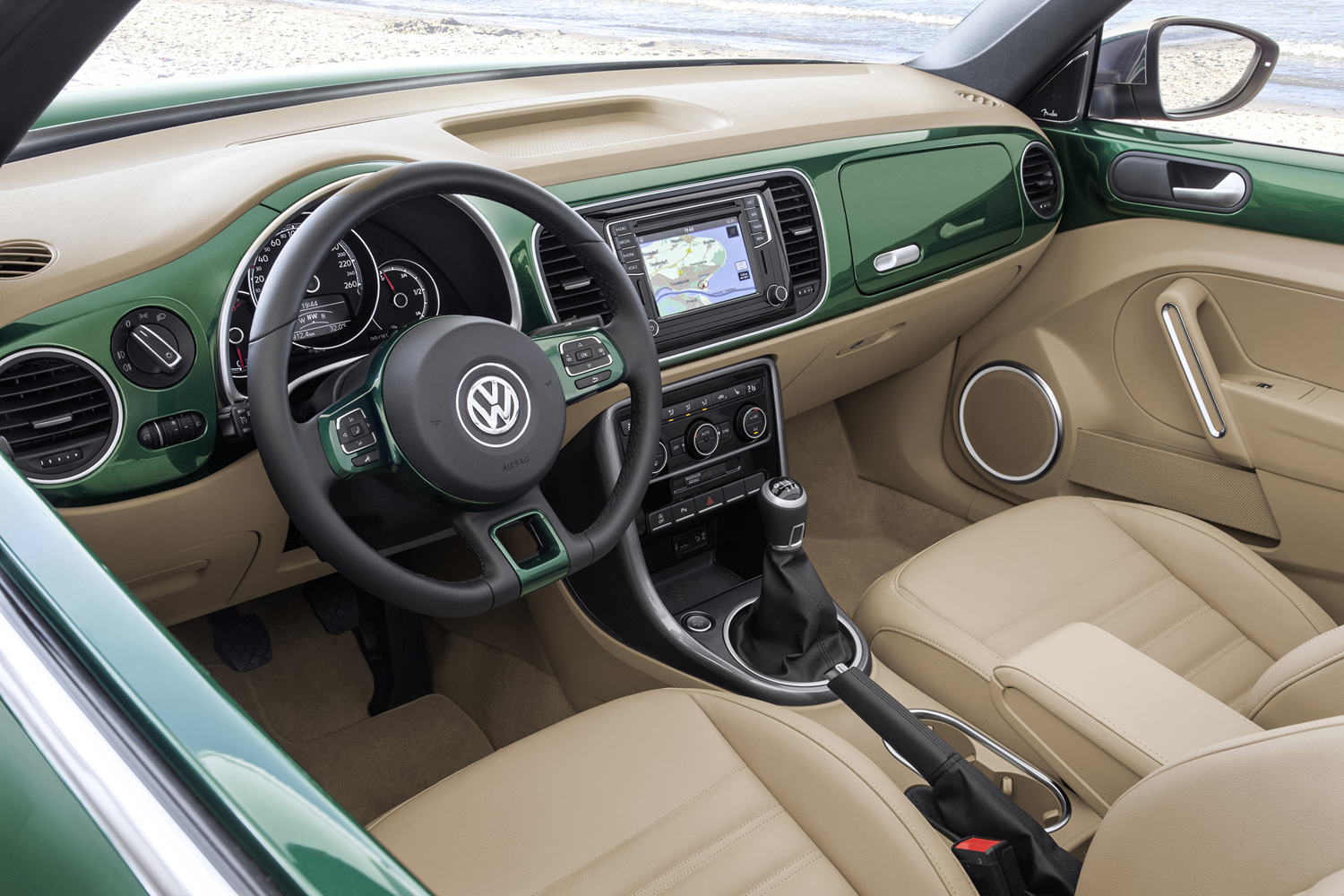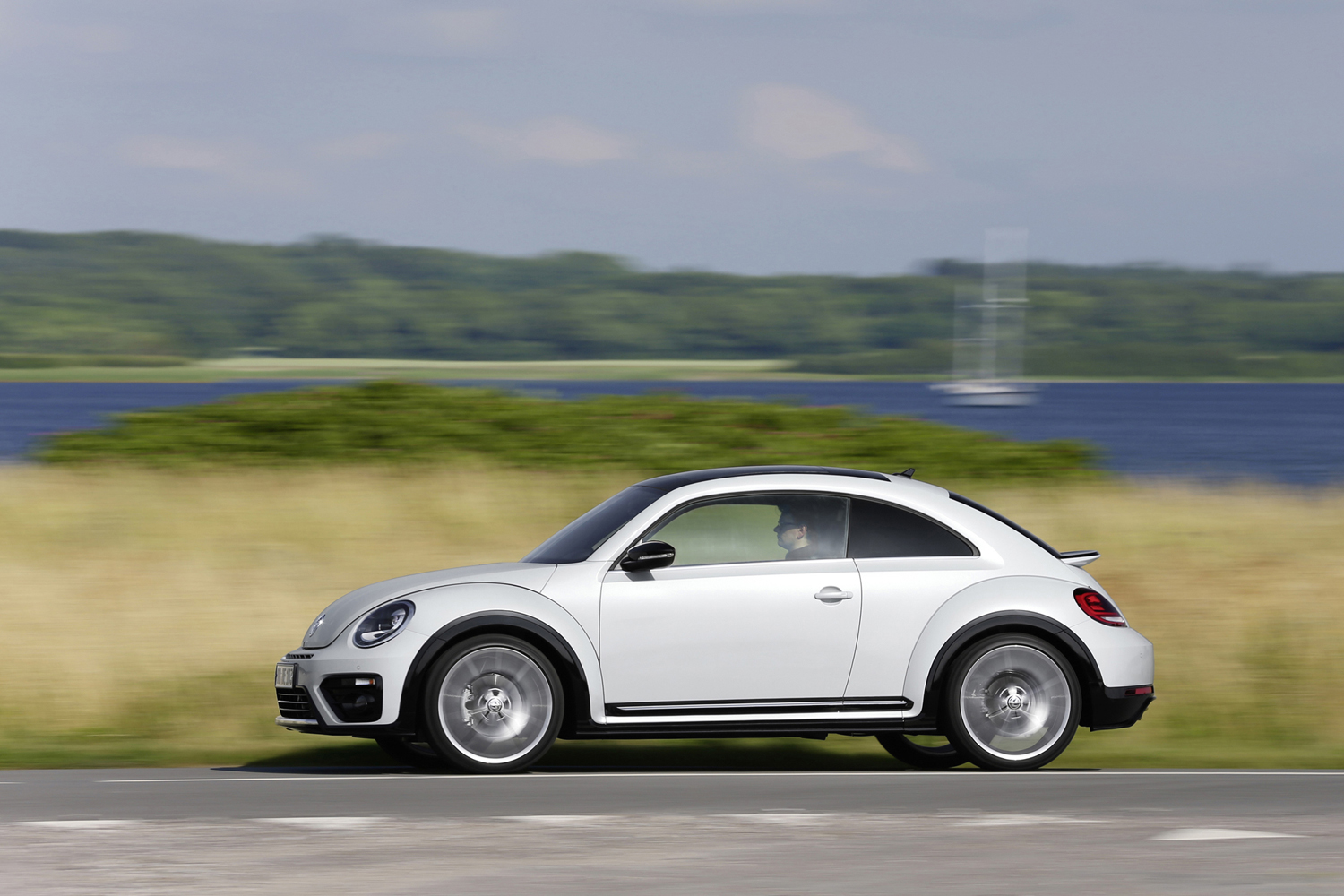Volkswagen has given the retro-chic Beetle an array of updates inside and out for the 2017 model year. The refreshed model was presented to the public during this year’s edition of the Beetle Sunshine Tour in Germany, and Digital Trends was on location for the unveiling.
Visually, all members of the Beetle lineup look sharper because they receive new-look bumpers on both ends and redesigned lights. Select trim levels also get a wide, thin air vent between the hood and the bumper that improves airflow while giving the Beetle a sportier look. Additional 17- and 18-inch alloy wheel designs and new paint colors (including bottle green metallic and white silver metallic) round out the exterior modifications.
Inside, the Beetle is fitted with a new dashpad, and a redesigned instrument cluster that’s clearer and easier to read than the one in last year’s model. The center console and part of the steering wheel’s bottom spoke are now body-colored, which adds more retro style to the cabin; enthusiasts undoubtedly remember that the original Beetle had a body-colored dashboard for decades. Volkswagen’s intuitive touch screen-based MIB II infotainment system carries over for the new model year. The software is standard across most of the lineup, and it’s compatible with Google’s Android Auto and Apple CarPlay.
The new model year doesn’t bring any mechanical modifications. The Convertible model is exclusively available with a turbocharged 1.8-liter four-cylinder engine that makes 170 horsepower and 184 pound-feet of torque. A Volkswagen spokesperson confirmed to Digital Trends that the Convertible lineup is broken down into three trim levels, called S, SE, and SEL, respectively, and the rugged-looking Dune model. The Beetle hatchback lineup is broken down in the same way, but SEL cars benefit from a turbocharged 2.0-liter four-cylinder tuned to provide 210 horsepower and 207 pound-feet of torque.
Read more: A GTI’d Volkswagen Passat exists … will we see it in showrooms?
The 2017 Volkswagen Beetle and Volkswagen Beetle Cabriolet will go on sale across the nation in the coming weeks. Pricing information will be published a little closer to their on-sale date.














